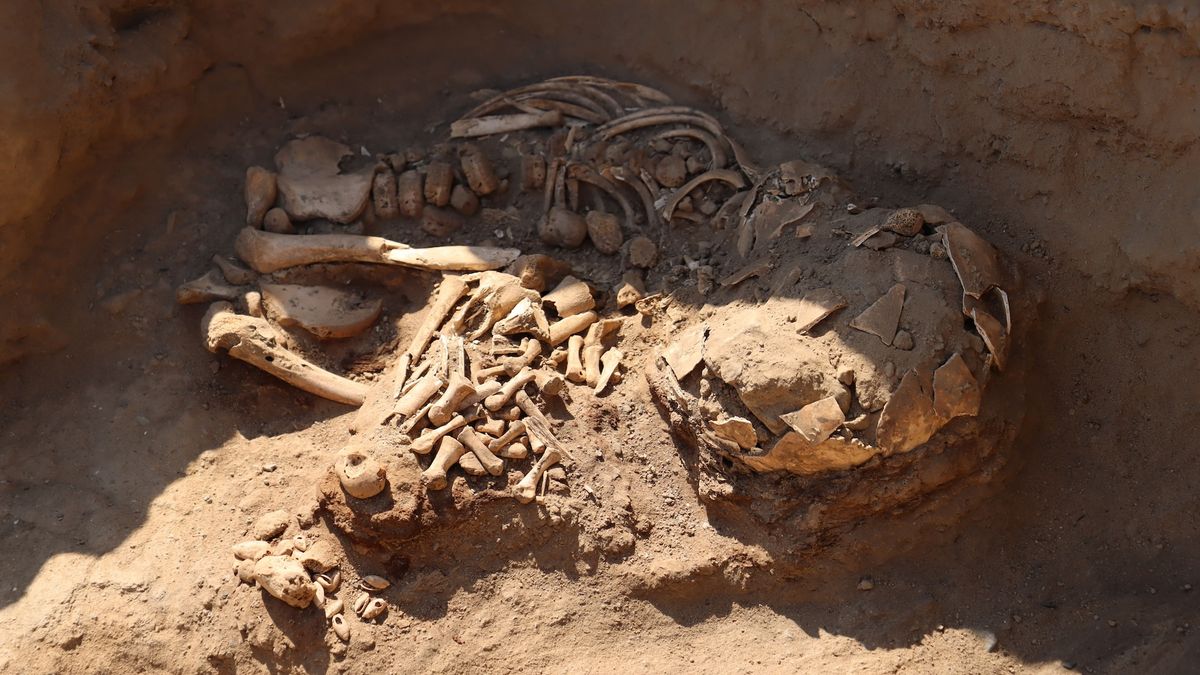Archaeologists have unearthed the skeletal remains of four people who were buried in Peru’s Viru Valley about 3,800 years ago, millennia before the Incas flourished in the region.
The burials of two children, a teenager and an adult were found in the remains of what is likely a temple, the archaeologists said in a translated statement. All four individuals were found lying on their sides and appear to face a mountain, the statement said. The remains of funerary goods, such as stone pendants and snail shells, were found with the deceased.
The burials date back to when people in Peru were constructing large buildings, including early pyramids, and using ceramics on a large scale. The new findings are only the latest unearthed at the archaeological site of Queneto in northern Peru, as archaeologists have been excavating there for more than 50 years. The site dates to the Early Formative period (circa 1800 to 900 B.C.) and predates the Inca Empire, which flourished in the Andean region of South America and lasted from about 1200 to the 1530s.
The temple containing the burials was built with cobblestone walls that were held together by clay plaster. The temple’s walls have curved corners, and pottery fragments have been found at the site. It’s possible that the temple had a cult associated with water, the statement said.
Related: 3,000-year-old tomb of shaman who may have mediated ‘between spiritual and earthly worlds’ found in Peru
Jason Nesbitt, an associate professor of anthropology at Tulane University who is not involved with the excavations, praised the team’s work. “I am highly impressed by this project and these investigations further demonstrate the importance of this valley during the early second millennium [B.C.],” Nesbitt told Live Science in an email.
“At present, there are relatively few burials from this period,” Nesbitt said, adding that these four burials “will aid archaeologists in examining social differentiation based on status, age, and gender.”
Nesbitt noted that he is “also intrigued by the notion that these burials were facing the mountains. Mountains have symbolic significance in Andean cosmology and were also the source of water for irrigation in an otherwise desert landscape.”
The team was led by Feren Castillo Luján and Christian González, both archaeologists at the National University of Trujillo. Live Science reached out to the team but did not hear back by the time of publication.

